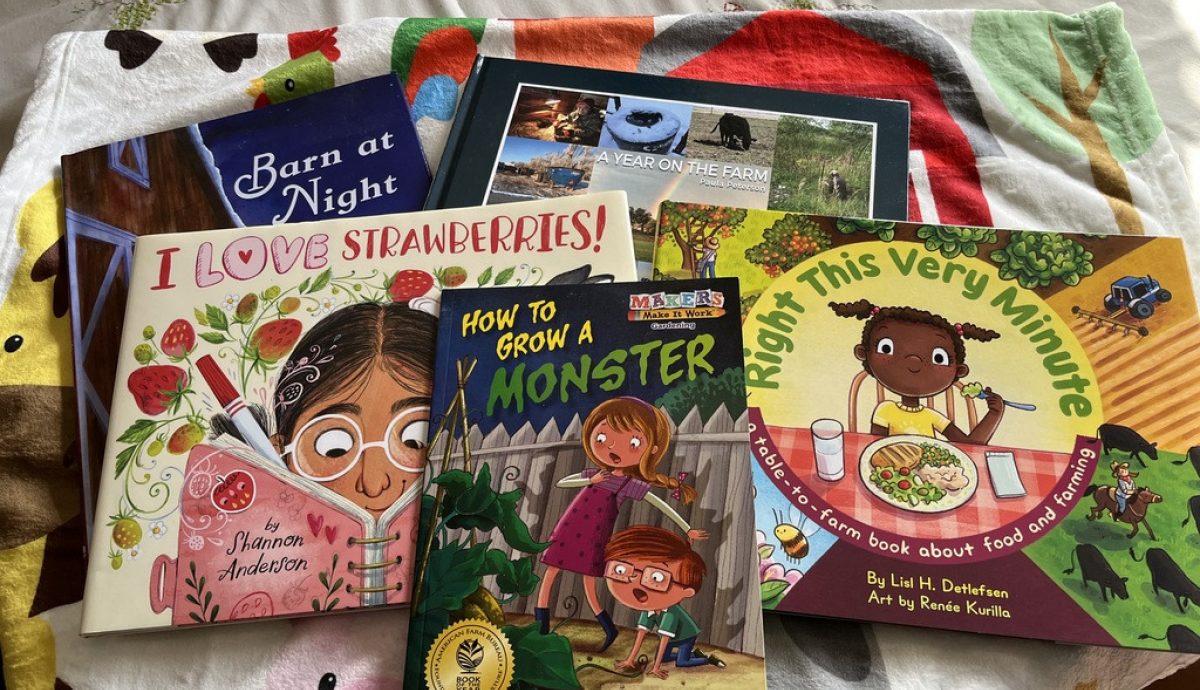Digging into What Makes a Good Farm Book
How do we decide which books make our recommended list?

Accurate agriculture books are hard to find. Old MacDonald has ruled the roost in children’s picture books for years (read more about that here). Rural life is often depicted as “quaint” and “cute” with illustrations of silly characters in overalls and straw hats. Modern agriculture, on the other hand, is driven by innovation, and there are exciting stories to share with kids about how their food is grown.
Thankfully, more “good” books about farming are cropping up, but it’s important to know what to look for. The American Farm Bureau Foundation for Agriculture often recommends books about food, farming, gardening, and rural life.
How do we decide which ones make our list?
Before we begin, it is important to note that any book that gets a child interested in reading is a GOOD book. That said, some books do a better job than others at portraying what farms, ranches, and rural life look like today.
Let’s jump in. Here are our criteria for recommending books:
1. Books must have accurate information about agriculture, gardening, food, or rural life, with modern agricultural practices being a priority.
We tend to recommend stories that take place in modern times, with a focus on stories that showcase real-life, modern agricultural machines, technology, and farming practices. If a story shows a cow being milked on a stool (in modern times), that most likely will not make our list. While history is important, we want young readers to understand that farms and ranches use modern technology and aren’t frozen in the past.
2. Books need to portray farmers and agriculture in a positive way.
Farmers and ranchers are on the frontlines of growing a safe and sustainable food, fiber, and renewable fuel supply. We believe they should be the heroes in stories about agriculture.
3. Books cannot contain depictions of anthropomorphic animals (i.e., animals that talk or act like humans).
Talking animals are fun, and some are beloved characters in classic children’s literature. So why do we avoid them? Well, no matter how many voices you give your dog in real life, he still doesn’t actually talk. The goal with the agriculture books we recommend is accuracy. On rare occasions, we will still recommend a book that has an animal that talks, but it is really rare and often has to do with the fact that there are no other options for that topic. An example is Charlie and the New Baby, which is a rare find in a children’s book, as it is an excellent example of how ranchers care for their animals.
4. Books should not convey any stereotypical depictions of rural life (i.e., overalls and pitchforks).
People in rural areas wear overalls sometimes, just like people in suburban areas and cities, but rural folks are almost always depicted in them. Rural residents live in the modern age and are not quaint characters. They should be depicted as modern people doing modern work.
5. Books must not portray any unsafe situations in pictures, graphics, or text.
What we look for specifically:
- Tractors must have rollbars or cabs and seatbelts.
- Children are not driving tractors. If they are in tractors, they are in a buddy seat with a seatbelt (not sitting on a lap).
- Small children should not be near large animals without adult supervision.
- Children are taking part in supervised, age-appropriate activities.
- Proper fencing for livestock.
- Proper PPE when required and proper safety materials like helmets, riding boots, safety goggles, etc., are used in appropriate situations.
- Slow-moving vehicle emblems mounted on farm equipment.
- Warning signs and labels are clean and legible on farm equipment.
Here is a more comprehensive list from Texas A&M.
6. Books should focus on a topic which is of interest in agriculture and society.
Such as crops, livestock, aquaculture, farm dogs, farm equipment or machines, hydroponics, pollinators, gardens, plant-life cycles, composting, sustainability practices, rural life, etc. All agricultural topics are open to review.
Why Do Accurate Ag Books Matter?
The mission of the American Farm Bureau Foundation for Agriculture is to build awareness and understanding of agriculture through education. Read all about why we think picture books are a great way to fulfill that mission here.
Because we believe in the importance of this mission, we try to maintain strict guidelines and adhere to them. That means not every book will make our list. We believe people trust our recommendations because of our careful attention to ensuring an accurate depiction of modern agriculture.
Do you love accurate ag books? Help us spread the word. Encourage your local library to purchase accurate ag books or donate them to your local schools and libraries.
You can view all of our recommended books here.









